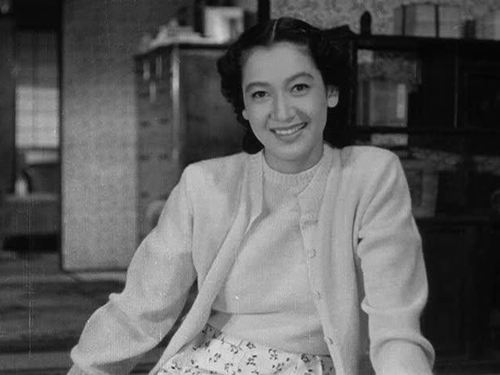
“I wanted to describe such deep matters as reincarnation and mutability, more than just telling a story. For this reason, Early Summer was one of the most demanding work I’ve done in years. There was criticism about the children being unruly. In my view, children and adults have different ‘rules’. When they grow up, they too will change. As for acting, it’s best to leave things unexpressed, something to ponder or savour. Those who appreciate this have themselves reached a transcendent state. Hara Setsuko is a fine person. If only there were four or five more such persons.”
Yasujirô Ozu
“Would it be heretical to suggest that the early films of Yasujiro Ozu are richer than his canonical work? This isn’t to impugn the later films, of course: the mature Ozu is one of the unquestioned glories of the cinema. Yet perhaps it is that very maturity, the blissful culmination of a style shaped over three decades of filmmaking, which gives the later work a certain, if not rigidity, then a definite feeling of ritual.
[...]
Perhaps this is what makes [Early Summer] my own personal favorite of all Ozu’s films. With a larger canvas than the intensive focus of Late Spring and a looser structure than the exacting symmetry of Tokyo Story, Early Summer feels freer, wider, more open even as it evinces the full-fledged mastery of the mature Ozu. Chronicling three generations of the Mamiya clan, Early Summer revolves, of course, around marriage: the efforts of the family to marry off their eldest daughter, Noriko (the incomparable Setsuko Hara) to a promising match, and Noriko’s own quietly firm ideas about how and to whom she will give herself.
While the question of Noriko’s marriage is the motivating force of the film, Ozu typically makes use of that force to set other points on his dramatic axis into motion. As David Bordwell notes in his essay accompanying the Criterion Collection’s beautiful edition of Early Summer, the film features 19 characters, plus a crucial 20th who is mentioned but never appears. The spectrum of thematic and emotional strains which Ozu gently coaxes from this ensemble yields some of his loveliest moments, many of them captured with that long-dormant moving camera. There are few scenes in cinema more beautiful or crushingly sad than the aging parents of the clan (Ichiro Sagai and Chieko Higashiyama) sitting on a park bench on a lovely summer day, contemplating Noriko’s approaching marriage and sensibly—not whole-heartedly—concluding that ‘this may be the happiest time of our lives’; spotting a balloon floating into the sky, the mother comments, ‘A child must be crying somewhere.’”
Andrew Tracy1
“It is possible to define Ozu’s style by what it is not. Ozu is the film-maker who doesn’t do certain things. This rarification of technique continued throughout Ozu’s lifetime, from his first film to his last. As he got older there were more and more things he didn’t do. This can be seennot only by comparing the early and later films (I Was Born, But ... and Good Morning), but also by comparing the different phases of his later films. Early Summer (Bakushu,1951) was made in about the middle of Ozu’s later (postwar) period, yet it is markedly different from hislast films made ten years later, Late Autumn, The Autumn of the Kohayagawa Family (Kohayagawa-ke No Aki, 1961), and An Autumn Afternoon. For example, in his last films Ozu completely forsook certain techniques he had used in Early Summer: (1) the tracking shot, of which there are fifteen in Early Summer, (2) a closeup with emphasis on facial expression, such as an old man’s pleasure in watehing the theatre, (3) a physical action to express obvious emotion, such as the throwing down of a handkerchief in disgust, (4) a cut on motion, that is, a cut which breaks one action by an actor into two shots, (5) a cut between two different indoor settings without an outdoor ‘coda’ pause, (6) use of chiaroscuro, non-‘flat’ lighting, although this is very rare even in early Ozu. Early Summer also contains techniques which Ozu did not completely discard but came to use less and less: (1) nonfrontal (90°) angles, (2) camera takes of relatively short duration, (3) scenes whose sole purposewas light comedy.”
Paul Schrader2
- 1Andrew Tracy, “Early Summer,” Reverse Shot, 4 April 2005.
- 2Paul Schrader, Transcendental Style in Film: Ozu, Bresson, Dreyer (New York: Da Capo Press, 1972), 22-23.

